One of the best things about being in a relationship with the Boy is that he actually enjoys cooking. He likes reading cookbooks and challenging himself to replicate the hardest and craziest recipes for the both of us to tackle and consume.
He watches cooking shows & chef interviews and reads up on all the latest goss in the realm of food and restaurants.
Being a foodie and part food blogger, this definitely sounds like a soulmate match-made in food heaven. I think so 😛
One of the cookbooks we recently purchased was Momofuku. Enthusiastically, the Boy flipped to the most tedious recipe he could find in the book and excitedly proclaimed that both he and I, would be tackling it.
The recipe? A ramen broth. Sounds simple enough. Until you read all the steps and calculate all the hours that goes into this broth of David Chang.
So after a fortnight (we were quite busy with work and other things) of finding the sacred ingredients that go into this magical broth (I called 3 Japanese grocers in and around Melbourne looking for the elusive Konbu seaweed), and a quick visit to Big W to buy a 16 litre stock pot, we were ready to rock and roll.
Momofuku Ramen Broth
(Recipe adapted from David Chang’s Momofuku Cookbook)
Ingredients:
6 litres of Water (we used 8 litres instead, and avoided replenishing water in the later stages)
2 pieces (we used 3 pieces) of Kombu/Konbu Seaweed (around 15 x 7.5cm sized) – rinsed under running water to wash and rehydrate [pic: bottom-left] – available (dried form) in good Japanese grocery stores
80g of Dried Shiitake Mushrooms (rinsed) [pic: bottom-right] – available in most Asian groceries
1.8-2kg of Chicken (preferably whole chicken or legs)
2.5kg of Pork Bones (bones with still some meat on them)
450g-500g of Smoky Bacon (we used Double Smoked Bacon)
5-6 stalks of Spring Onions
1 medium sized Onion (halved)
2 large sized Carrots (peeled and roughly chopped)
Tare (see below for ingredients and procedure) *Can be substituted with coarse sea salt, soy sauce and mirin
Procedure:
Add Kombu into water in a large stockpot and bring it to a simmer under high heat. Turn heat off and let the seaweed steep for 10 minutes to allow flavours to infuse. Remove all seaweed and add Shiitake mushrooms into the stockpot. Bring water back to a boil, and reduce heat to gently simmer for 30 minutes. While simmering, preheat your oven to 200 degrees Celcius.
Remove Shiitake mushrooms from the stockpot (Shiitake mushrooms can be kept aside for other purposes such as Pickled Shiitakes – another Momofuku component we added into our Ramen).
Add the chicken into your stockpot and leave broth on a gentle simmer. Remove any scum that rises to the surface of the broth. You can add additional water to keep the chicken covered (we skipped this step as we had ample amount of water to keep the chicken covered). Keep simmering for about 1 hour.
While your chicken is simmering, put your pork bones in a roasting pan and place them into the oven for 1 hour (turn them over after 30 minutes to ensure an even browning on both sides).
After 1 hour, check that the chicken meat pulls away easily from the bone. If it does, remove the chicken from the broth. If not, continue to simmer until you achieve what is required.
Once you’ve removed the chicken, add the browned pork bones (from the oven) as well as the smoky bacon. Continue to heat at a gentle simmer and remove any scum that surfaces. After around 45 mins, remove the bacon.
According to the recipe, you should gently simmer the broth for 6 to 7 hours or as much time as you can (it is also recommended that you stop replenishing water after the 5th hour). We left our broth to simmer in the stockpot for 5 hours, and after that, we transferred the broth into a slow cooker and left it on “low” setting for 8 hours (it was really late at night and we didn’t want the gas stove to be left unattended overnight while we nap – so the slow cooker was our other option). The next morning, we transferred the broth back into the stockpot (from the slow cooker) and continued to simmer for another 5 hours. In total, we did about 18 hours on the broth.
Add the spring onions, carrots and onions into the stockpot and simmer for the final 45 minutes (we left it for 1 hour). Remove all pork bones and vegetables from the stockpot. Strain the broth through a very fine sieve or muslin cloth (you don’t want to leave any shattered bones in your broth). The broth can be used at this stage (with the tare, of course) or you can reduce it by half over high heat and keep them in containers (Chang reckons that it would keep for a few days in the refrigerator or a few months in the freezer). It’s always handy to have Ramen broth in your freezer, so whenever you feel like it, just pop some on the stove, heat it up, toss in some noodles and sides, and you’re good to go!
Before using the broth, you will need to finish it by seasoning it with tare. David Chang’s tare makes all the difference in this broth. But if you can’t find the time to make the tare, you can always substitute it with coarse sea salt, soy sauce and mirin.
————————————————————————————————————————
For the Tare:
You will need: 2-3 chicken backs (or bones with some flesh and skin from cutting 1 whole chicken), 225ml Sake, 225ml Mirin, 450ml Usukuchi (light soy sauce) and freshly ground black pepper.
What you’ll need to do: Preheat your oven to 230 degrees Celsius. Cut chicken backs into 3 pieces and spread them onto a large oven-safe frying pan (a cast iron frying pan would be great) and place it into the oven for 45mins to 1 hour. Keep checking to ensure that the bones are browning and not burning! Take them out and lower the temperature if they are starting to burn. What you’re looking for is the fond (yummy fatty liquid that is caramelising at the bottom of your pan) to be dark brownish but not burnt. Remove pan (careful, it’s hot!) from the oven once your bones are perfectly browned and place on the stove. Add a splash (or two, depending on the size of your pan) of sake into the pan (heat on medium high) and start scraping the fond off the bottom of the pan once sake starts to bubble. Add remaining sake, mirin and usukuchi once the fond is removed. Turn heat to high and bring to a boil, then lower the heat to a gentle simmer for 1 hour to reduce. Strain liquid and season with a few dashes of pepper.
————————————————————————————————————————
The amount of tare needed to finish your Ramen broth depends on your taste buds. It is recommended that you start with 2 to 3 Tbsp per litre. You don’t want it too salty but not under-seasoned as well.
What did I think of all this hard work? The broth was magnificent! And I’m not saying that just because we cooked it and spent our whole weekend on this.
It really was. It wasn’t quite what we expected as well. I was expecting a thick tonkotsu-like broth (similar to Gumshara), but this broth was quite clear in colour. By no means was it watery or lacking in flavour.
What can you do with this broth? Apparently many things. We used it as a soup base for our Ramen (obviously) and Korean Rice Cakes (stay tuned as they are coming up soon!)
Would we be making this again? Yes, but not too soon. I think we both need a break!!



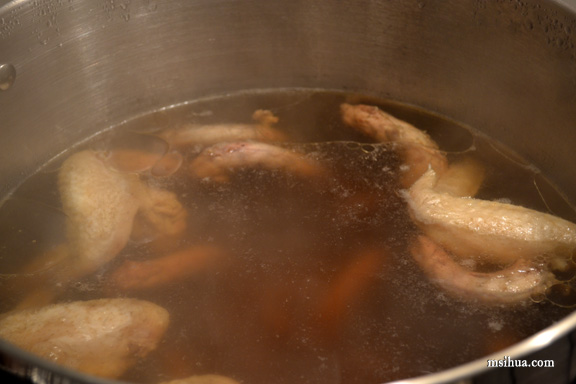
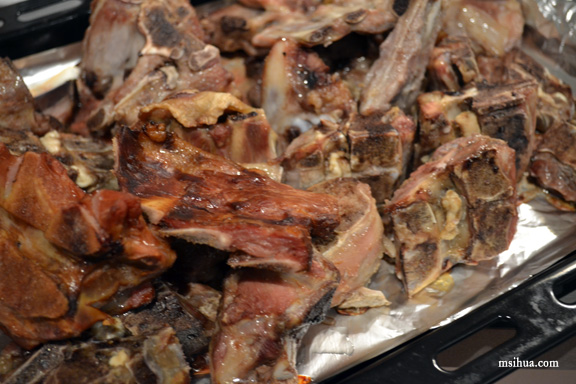
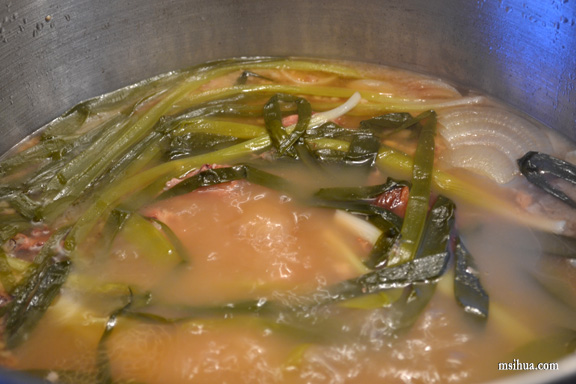
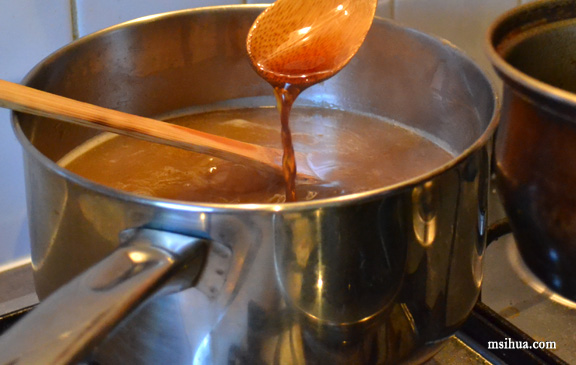
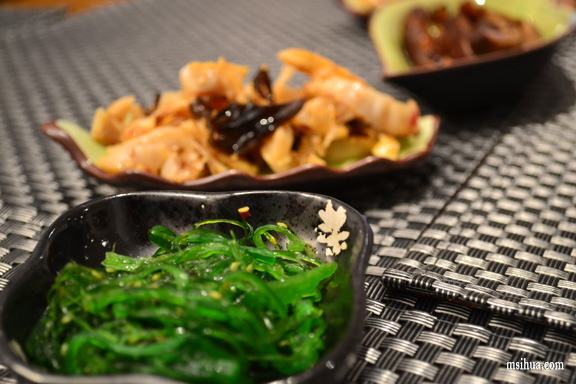
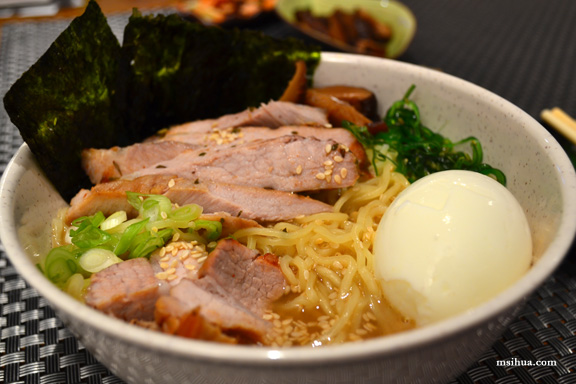
WAH LAU EH!! Soo Leh Cheh!!! Hahahahaha!!!
But now I know what I can do with the packets of konbu I have at home. I found konbu at Minh Phat in Richmond as well as Great Eastern Grocery on Russell St. Made wonderful dashi with it.
I was okay with the broth-making but nearly fainted when i read the “tare” part.
HAHAHAHA… you can.. the konbu we found were fresh from Japan. Dehydrated, but had to be used within 2 weeks. We went to Minh Phat and couldn’t find any.. damns!
I’d love to make this one day! Actually I should make it earlier rather than later as this is the perfect dish for Winter! 😀
You should tackle this definitely. It was worth it!
I saw the real way to make ramen in youtube. Man that’s a lot of work for a simple ramen, but definitely worth the sweat!
A great ramen broth has a deep and spiritual yin zen I reckon. The taste lasts longer than the instant ones and the impression satisfies sweeter too 🙂
Yes, it is a majorly long process. The results were worth it tho in the end 🙂
Just, wow. Should we be preparing for a #teamtheboy #masterchef next year? 😉 I haven’t even had ramen since I went to Japan in 2007… I bet your verson is even better than the one I blind-chose by pressing a random button on the ticket machine outside a tiny restaurant in Tokyo!
Not after 20+ hours. He’d fail all the pressure tests 😛
Kudos to you for making this! Man, this is even tougher than making the authentic paella! Seriously, I don’t think I will do this. Maybe my sister will but then again, your house will smell like the broth!
It’s more the length of time it takes then anything else. And yes the house and (us) did smell like the broth for the whole week.
Hats off to you two! I can’t imagine I would tackle a time-consuming recipe like this one anytime soon. It does sound delicious though!
Thanks! It was delicious!
Ooh la la, task well done! I also love tackling the seemingly impossible, so big hats off to you for this success!
It did quite seem impossible, but we did it in the end! I’m still amazed 🙂
a broth weekend – what a task. but what a tasty task!! It looks just beautiful. so worth the effort 🙂 yum!
Heidi xo
It was cold too I think that week. So it was a double bonus!
18 hours of cooking!??
crazy as it sounds, i think i could actually have a crack at this after we bought ourselves a 9 litre stockpot on clearance, our old 4 litre pot was obviously not enough for anything substantial!
You should! We used a 16 litre stockpot, only because all the bones add up.. it was seriously heavy duty stuff though… two person job 🙂
18 hours?! I don’t think I would have that much patience. Well done for going through all of that!
Hahaha.. it does require a lot of patience.. I know the smell of the broth was even intruding into my dreams 🙂
Awesome, I’m so impressed! It just goes to show why you pay the big bucks at his restaurant. When we make stock at work it takes all week, but the end result is so rich and sticky that it’s amazing. Great job guys!
Thank you thank you. I know… I always thought making stock was a no brainer.. but this is hard work!
Can anyone tell me the yeald of the broth?
I have not heard about this recipe before. I will surely take note of this dish, especially because my wife loves
thanks for the great information you have shared with us
I’d love to make this one day! Actually I should make it earlier rather than later as this is the perfect dish for Winter!
I will try it, definitely it looks amazing in my thoughts because this is for winter.